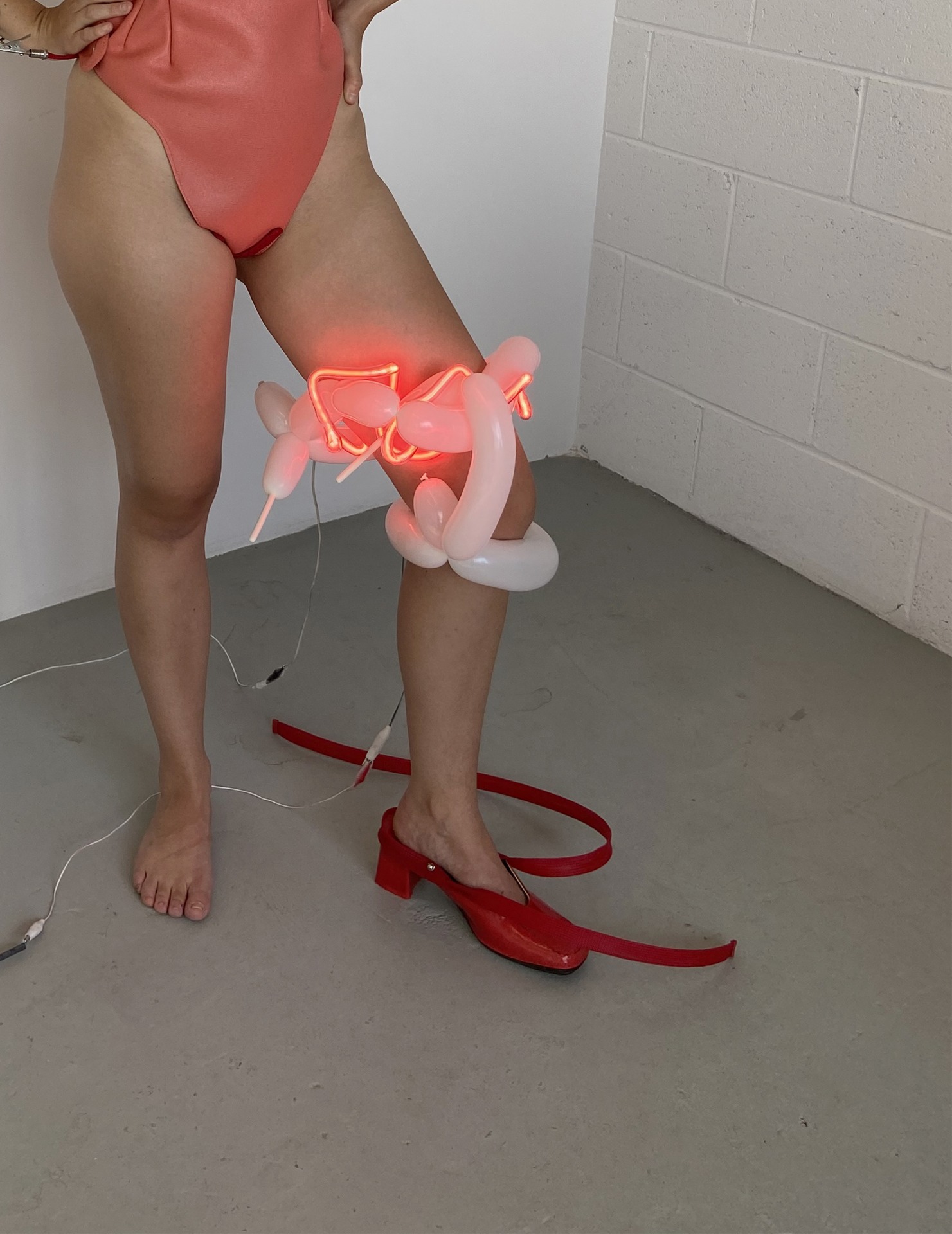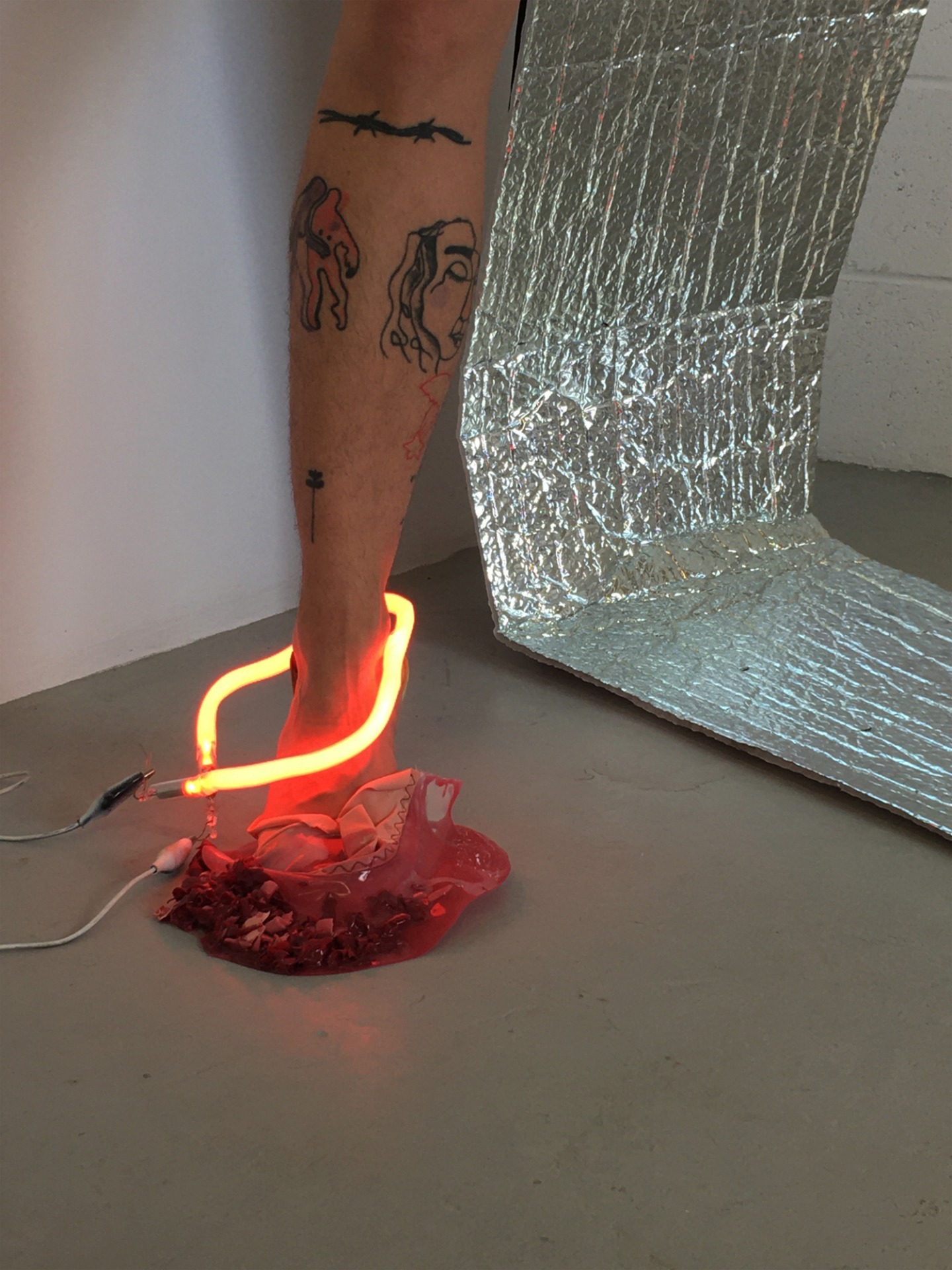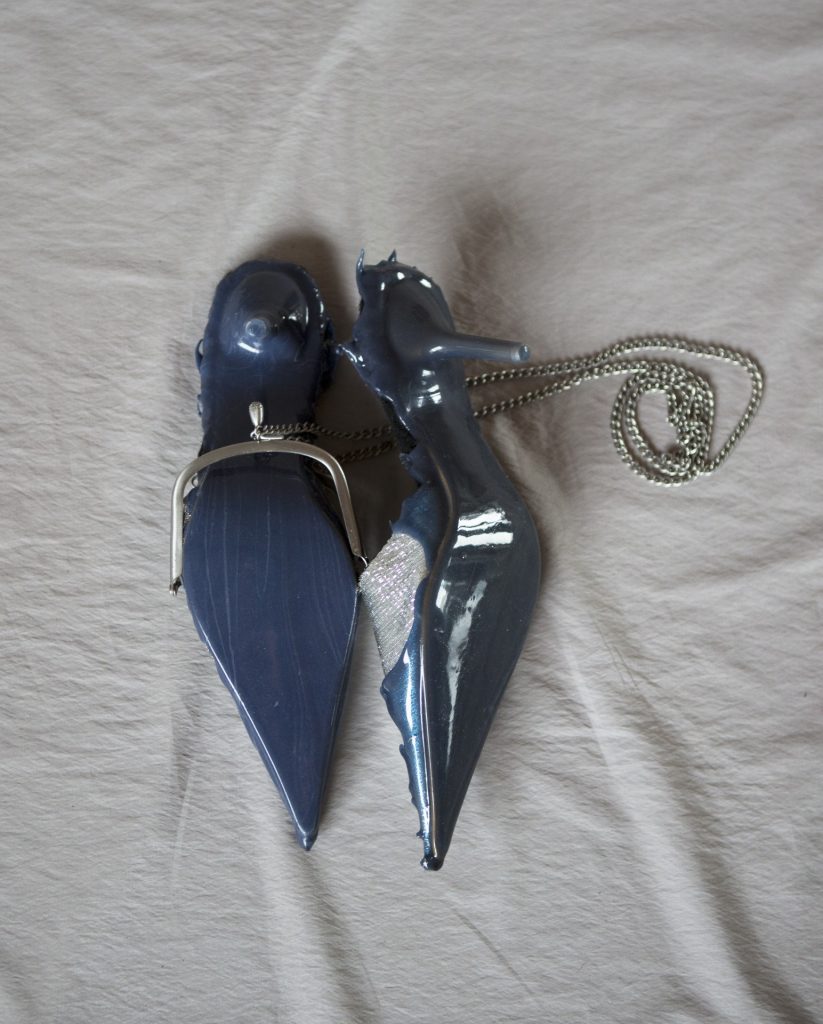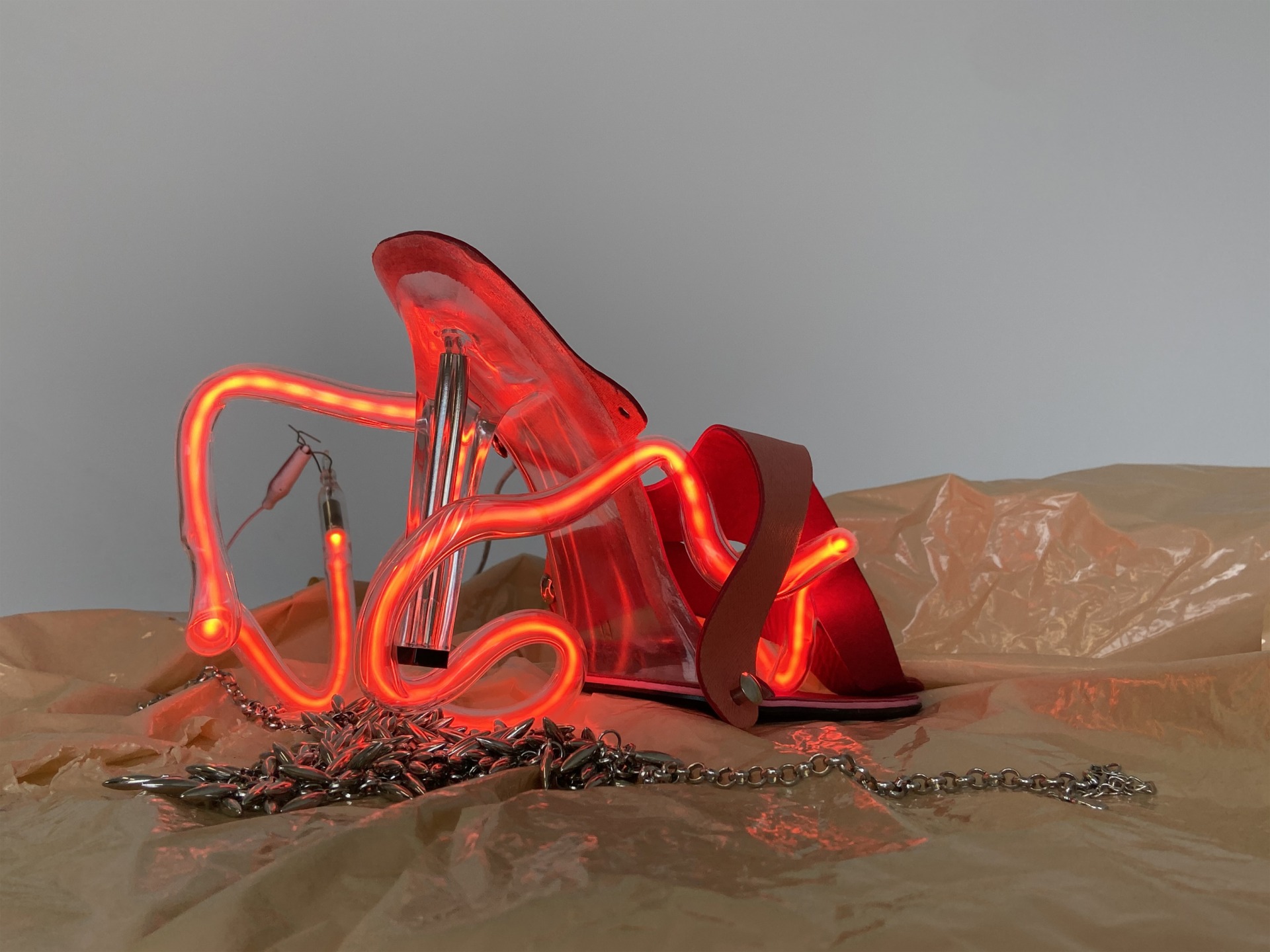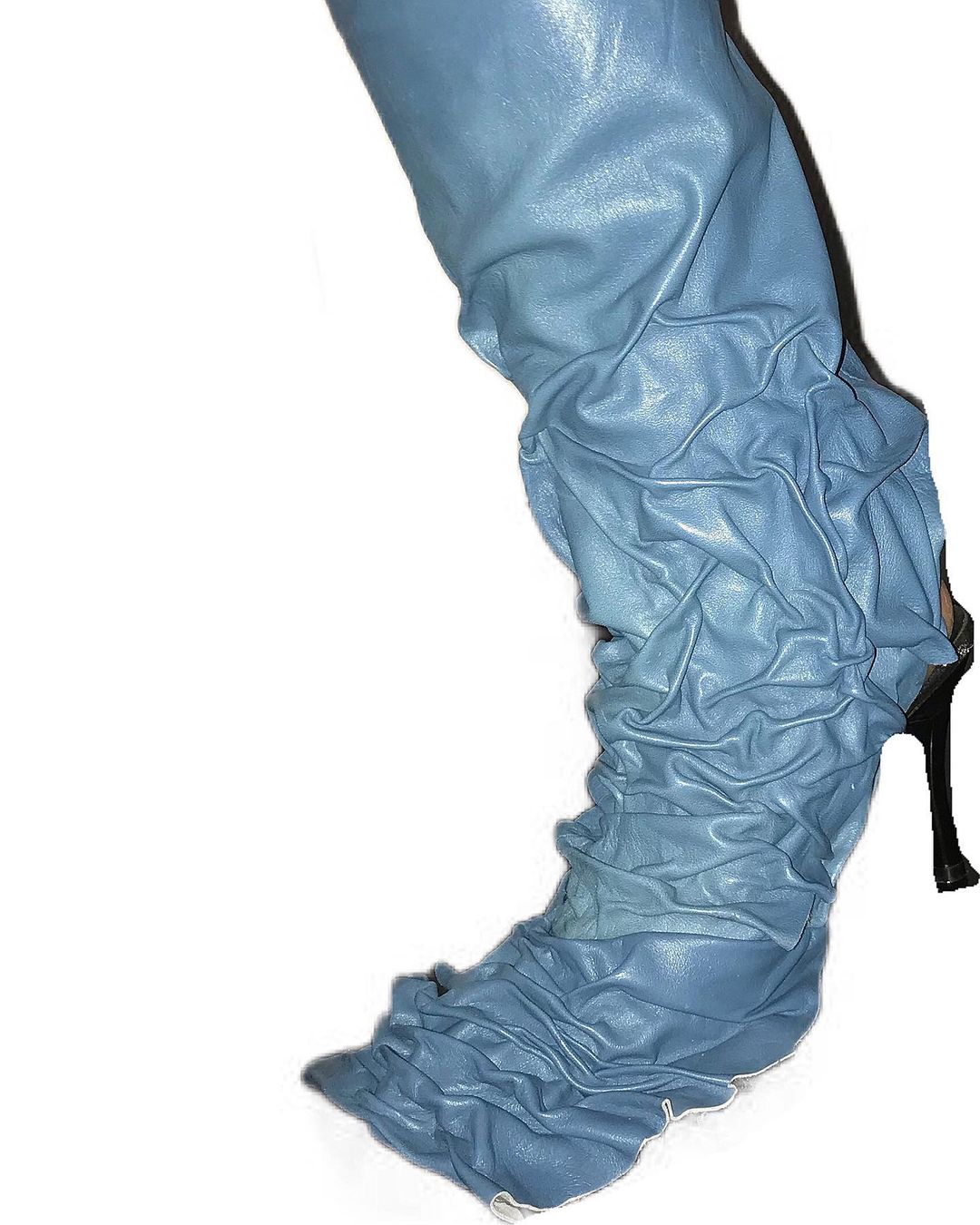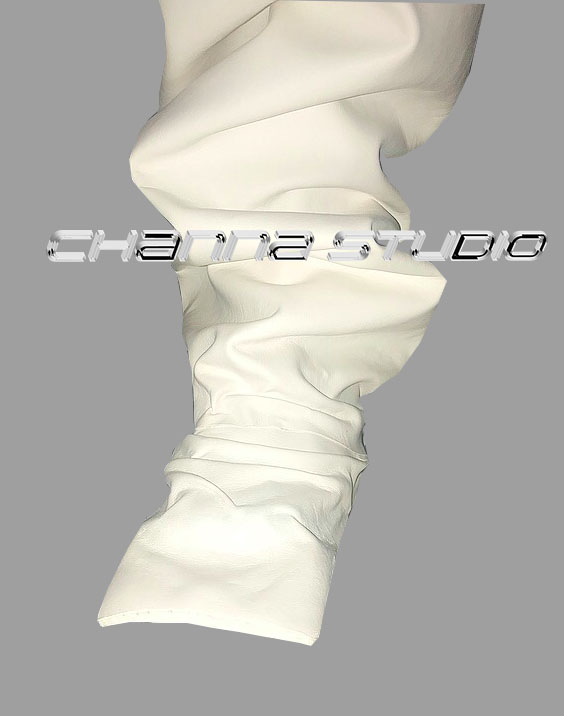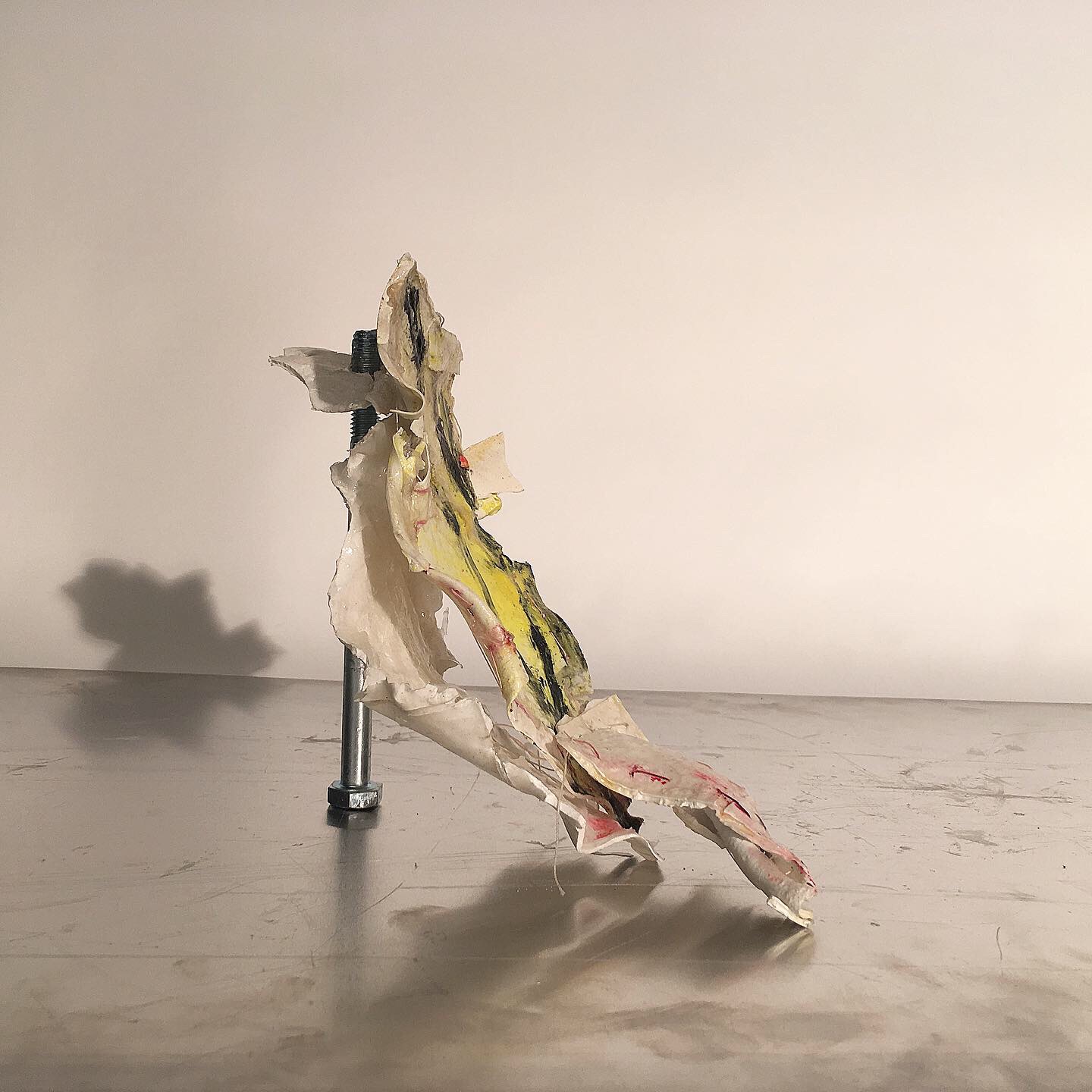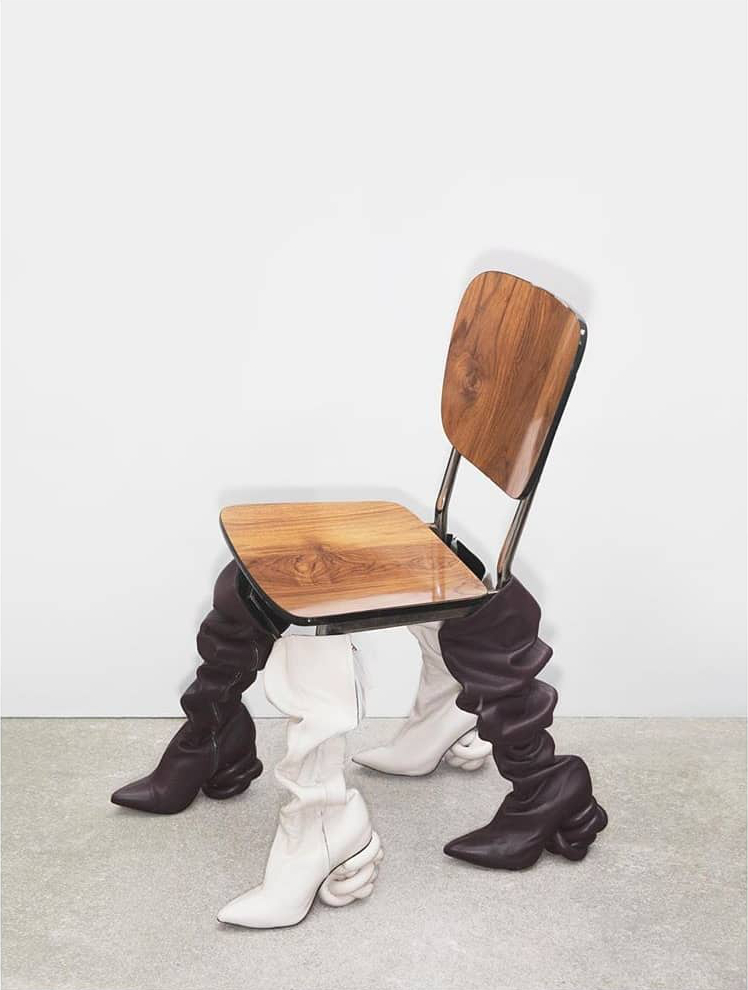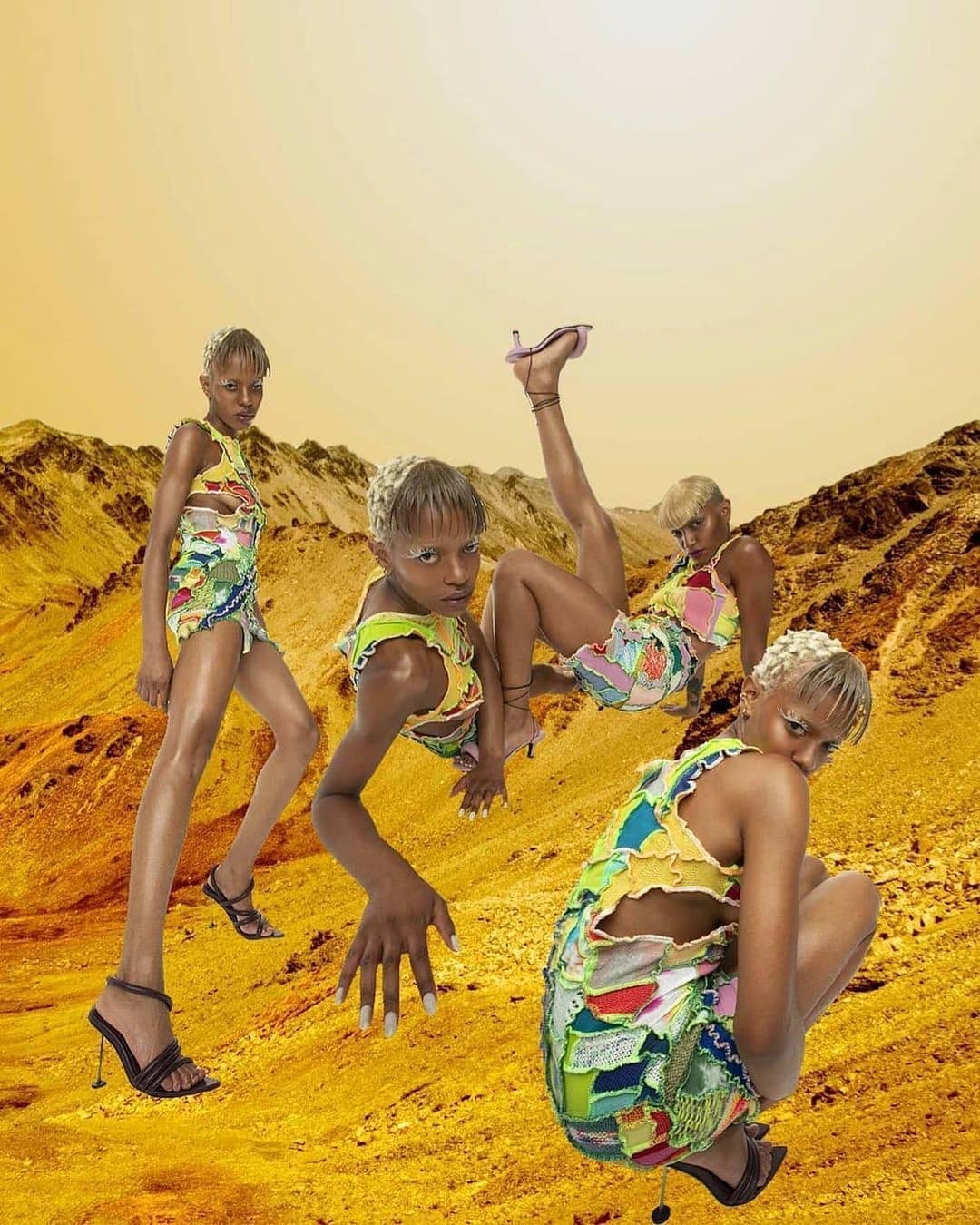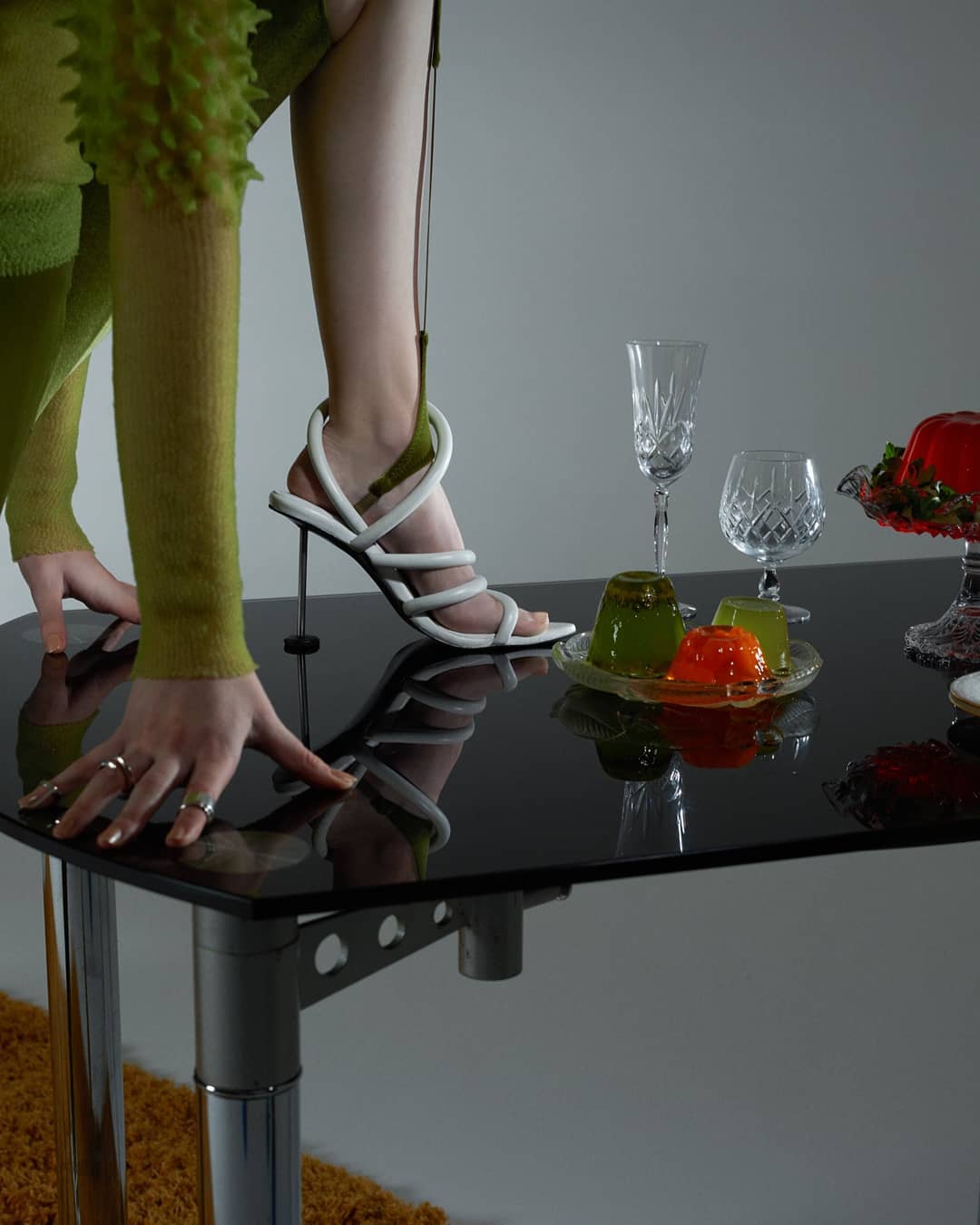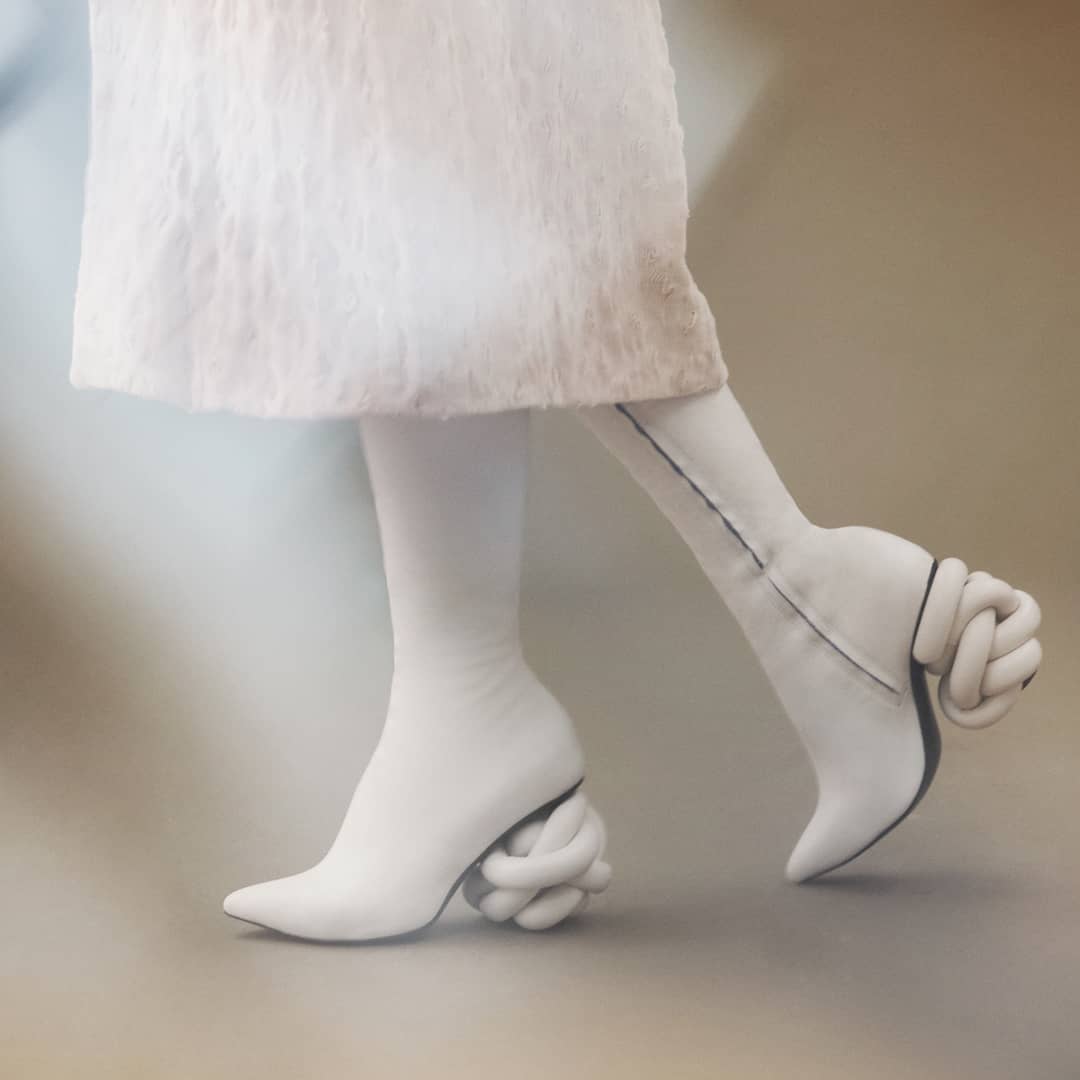In a time of overconsumption and a lack of emotional values, the entire fashion industry is challenged. Every segment of the field is impacted by this phenomenon from pure clothing to shoe design. Although the shift in the fashion design vision is largely discussed, looking closer to the forms these changes have taken is an opportunity that is often missed. After going to a standardisation period – mainly caused by the expansion of streetwear and fast fashion – shoe design is today investigated by emerging designers, not afraid to go out of the norms. Far from the necessity of generated benefices, they are aiming to explore another approach regarding pieces of clothing and objects overall. Beyond bold and innovative designs, these designers are pushing us to question our relationship to clothing and redefine the emotional aspect of possessing a pair of shoes.
With trends becoming more and more obsolete due to deep changes in cultural aspirations, manipulating the same object to give it different forms has become a real opportunity for audacious designers to come up with alternative designs. By avoiding the path of standardisation and meaningless products, they are studying shoes as having a voice on their own. Today we are introducing 3 creatives that are going beyond social expectations. No rules nor limitations, they are sharing their aesthetic – more complex and brutal.
Olivia Bretheau
Montréal, Canada – oliviabretheau.ca
Starting in Canada, our exploration goes to Montréal to meet designer Olivia Bretheau. After being born in France, Olivia moved at the age of 8 months to Canada. Since then, she has been submitted between the two cultures. Moving to Montréal gave her the opportunity to study fashion management at the Ecole Supérieur de Mode of Montréal. Although she wanted to pursue a master in accessories and footwear, she “took a break from academic teachings. It allowed [her] to set up a studio, recover [her] energy and have the freedom to create.” This time apart from the academic world, allowed her to collaborate with a lot of talented creatives from the Montréal scene – from the art world to the music industry. Not often mentioned, Montréal is a city where culture and creativity are united to create very unique projects involving a lot of disciplines. Growing up as a designer in this context enabled her to explore multi-disciplinary approaches that aimed to create an osmose – stimulating for every party involved.
Olivia Bretheau – Collaboration with Fanny-Jane
When observing Olivia’s work, we are immediately able to sense the artistic side she gives to her designs. It all started with her mother. Like many designers, Olivia is relying on her heritage to build her current vision. “As a child, I was immersed in a cocoon of creativity; I was surrounded by canvases, paint palettes, beads and fabrics” she explains. Olivia feels that everything that her mother was not able to explore at the time has been passed on to her. A heritage that she truly cherishes. Thanks to her studies, she was able to add the technical part and gained the skills needed to do fashion design. The influence of her mother is visible in many aspects of Olivia’s approach. During her childhood, she was used to reusing materials and objects as her mother encouraged her to. “I remember when my mother was an art teacher, she used to collect leftover materials to encourage us to create at home.In addition to making us wear second-hand clothes, the idea of recycling was passed on to me at a very young age” she explains.
Today, these familial perceptions and habits have taken an important position in Olivia’s visions. By reusing, she is fully embracing the irregularities or imperfections these objects and materials can have. “I like to find the beauty in decay and create with what comes to me organically” she comments. Beauty is a subjective notion. It can be seen differently according to the influences of our experiences and near surroundings. For Olivia, it is not a matter of perfection. The process of deconstructing to create other forms that are pleasant for her eyes is at the centre of her work. “My vision is at the opposite of luxury and elitism” claims the young designer. Far from the aesthetic standards imposed by the industry, Olivia’s designs are led by her intuition. “My work is an intuitive process that includes the use of colour, shape, textiles and accessories. When I am creating, it is the materials I’m using that dictate the outcome and have the power to express themselves.” While designing, she first needs to put the pieces on the floor so she can have a better idea of the general visual impression of her work inputs. Her designs are the combination of ”the use of silicone, natural or synthetic fabric and recycled objects.”
Olivia Bretheau – Collaboration with Gabriel Paul Caron
Although this pandemic has been very challenging, it didn’t stop Olivia from collaborating with various actors in the industry. Because uniting skills is an aspect that she truly adores, she teamed up with two different creatives to create projects in a context of uncertainty. The first one was made with visual artist Fanny Jane- who works with neons. “One afternoon, we combined our work in a sculptural way which gave rise to an intuitive dialogue between our mediums.” The second project was a collaboration with designer and friend Gabriel Paul Garon for the accessories of his collection Épilogue. “I wanted to interpret these accessories by incorporating my use of recycled fabrics and objects. I worked on the development of several pairs of shoes and handbags made from wool, silk, knit and leather; as well as urethane for the soles” states Olivia. While expressing what this field requires to remain relevant in the future, Olivia affirms “I think the fashion industry needs to start focusing more on community and collaboration.” These communities can make fashion more in touch with the current and upcoming social concerns. The young designer is convinced that “it is through the acknowledgement of its emerging creators that it will adjust itself to modern concerns and evolve in the right direction.” Above the social opportunities this approach of fashion gives, Olivia also thinks that we need “to find a way to recycle through more accessible technologies.” Either it could be through textile innovation or transformations of pre-existing materials. The most important for the near future according to Olivia can be summed-up in three core ideas: collaboration/community, emerging creators and recycling practices.
Olivia Bretheau – Collaboration with Fanny-Jane
Imelda Channa Luft
Stockholm, Sweden – claudiaencanta.com
The next step of our exploration in shoe design leads us to Sweden – more precisely in Stockholm. We are meeting Imelda, owner and main creator of Channastudio. Born and raised in Gothenburg, she moved to the capital to pursue her passion and later established her label. Currently, she is working mainly on her designs and also studies visual communication part-time. Imelda’s universe is very unique and intriguing. She has a specific vision of shoe design. “Shoes are inherently poetry in itself. It’s a statement of how you are or how you want to be, ” she states. When looking at her shoes, we can automatically see that Channastudio is not about standard aesthetic. By challenging what is usually expected from shoe design, Imelda has truly a visionary approach. “I’m letting the shoes be their own creatures, ” explains the designer. Her intuition is guiding her through this creative process. “It has to happen in an organic way” or else she feels this cannot be authentic and pure creation.
Her secret is to not limit herself from searching and moving from one creative world to another. “I feel unfulfilled if I can’t move freely between art forms” explains Imelda. Her philosophy is to not fulfill the expectations by going above them. Knowing that beauty is subjective, her focus is far from the aesthetically correct – sort of speak. Channastudio is a universe of expression first for the founder Imelda. It is a space where boundless experimentations are possible. There is no genuine expression if there are rules and codes. Therefore, Imelda only pursues the quest for simple and pure expressions. It led her to explore the concept of The Vulgar Women. She describes her as a state of mind. “Vulgarity for me is filled with strength and opens up for creation without norms.“ She pictured this persona as having a raw sense of expression but also soft and vulnerable features. “Based on that, I work with the material and the visual” she continues. Her designs are more than objects, they have a life and character on their own.
It is through her creative process that she can incorporate such expression and personality in her designs. “When I build a new shoe, I start by creating an energy around it” explains Imelda. This energy is organic as her process and comes from various influences. After investigating this energy, she is translating it through fabrics and materials. Often, she is using an old shoe as a frame and built around it. However, “sometimes [she] create[s] the whole shoe from scratch.” For Imelda, seeing shoes as more than simple objects involves extending this approach in every step of the process. It means that when she is searching for the materials, she likes to let them tell their own story. Therefore, it is going beyond the act of polishing these fabrics and making them acceptable. As she explains, “I have a need to not only communicate beauty but also letting the rawness of the materials speak for themselves.” Having a real critical point of view, Imelda has always been drawn to defy the norms and rules imposed by the trends system. “If I follow the rules then it wouldn’t be my language, it wouldn’t be the correct feeling in the materials and it wouldn’t be Channastudio” she states.
Beyond the expression of material and the act of defying the rules, Imelda sees her practice as a way to empower women – because that is also the goal of fashion design after all. She is sharing a lot with her community and it touches her to receive feedback on her work and what it brings to the owners of her unique pieces. “They tell me that they feel empowered thanks to the rawness of the expression,” she tells us. Through communicating directly with Channastudio’s audience she is inspired to be part of this universe of true expression. Realness is what Imelda is seeking and it influences various parts of her visions of the fashion industry overall. The field needs to adapt to the social reality according to her. “I would like to see more designers from all over the world in the industry” expresses Imelda. She is adding that she wants to see more creatives from different educational backgrounds as well. That way it creates “a broader spectrum of expression and gives it some new culture” she affirms. For Imelda, the industry needs to rethink its norms and open up to new influences. Especially, “when it comes to norms about sexuality, size and race.” Juxtaposed to this need for social equity in this field, Imelda is also tackling environmental damages. “I think we have to stand our point and try to reduce the power the influencers have on overconsumption” claims the designer. The culture needs to change and to focus on visions and the real purposes of fashion in our daily life. She is firmly standing against fast fashion as she sees it as the bad habits of the industry. “Fast fashion not only destroys the planet it also allows it to steal designers’ ideas and creations and makes it impossible for slow fashion to work” concludes Imelda.
Tabitha Ringwood
London, United Kingdom – tabitharingwood.com
The last stop of this shoe design experiment ends in London with designer Tabitha Ringwood – currently the Creative Director of her eponymous label. She has initially been trained in footwear design back in 2012 at DeMontfort University. After she graduated, she worked for 5 years as a commercial footwear designer. “I began to accumulate an in-depth knowledge of the industry” states Tabitha. Nevertheless, the more she was familiar with the commercial part, the more she felt a need to reinvent the approach of shoe design. For her, “this experience fuelled an intense and deep desire to re-explore footwear design from a more personal perspective.” Hence, she decided to study further and enrolled at RCA to complete a MA in Womenswear Fashion in 2018. By also focusing on footwear during this learning period, she managed to shape her own and unique vision. Today she is collaborating with a lot of talented creatives within the London fashion scene such as Palmer Harding, Andrew Bell, Joao Maraschin and Sinead O’Dwyer.
Tabitha Ringwood – Left: Shot by Ali Foroughi
Right: Shot by Ben Fourmi & Cyril Vcn
Article Banner Image: Collaboration with Andrew Bell
Like Imelda and Olivia, Tabitha has a specific approach to footwear design that sets her apart from the mainstream trend – that she usually avoids. “I endeavour to not categorise my styles too much by ‘season’ but often repeat styles or colour ways from one collection to the next as it’s really important for me that my work is not ‘trend’ driven, they’re pieces crafted to love and invest in” she explains. The knot heels – which have become synonymous with her label – were inspired by the “intertwining connection between designer-maker – product – wearer.” With Ian Whittaker, her heel maker and Iliaz Iliazi who specialises in lasting and finishing, they created what is today one of the most innovative designs in contemporary footwear. Beyond this incontestable unique aesthetic, Tabitha Ringwood is a label that cares about sustainability and zero waste approaches. It also gives values to objects and encourages her audience to build a relationship with their shoes.
Tabitha is developing her designs around the concept of emotional sustainability. For her, this notion “relies on the simple idea that an object’s value is enhanced over time by the journey of its materials, its manufacture or the stories of the people that have worn them or produced them.” The process of creating emotional sustainability starts with the act of linking a story and a soul to her designs. That way she hopes to create a relationship between her products and the wearer. “It forms a meaningful connection; an attachment that people would be less inclined to dissolve” she develops. Through this approach, Tabitha is convinced that it enables to challenge “controversial societal and environmental habits such as superficial relationships to objects, overconsumption habits and the all too familiar routine of throwing repairable or re-usable items away.” Bounding the notion of sustainability to the emotional sphere aims to bring care and durability. Because it is harder to get rid of an object in which we project a story or emotions. It gives items a real soul.
Tabitha Ringwood – Left: Shot by Yaquine Raw
Right: Shot by Lorenzo Berni
Through the practice of Imelda, Olivia and Tabitha, we explored a multitude of forms for footwear design. Although the final aesthetic of each designer is unique, we can notice a common point. The three of them are manipulating shoes as if they have a soul. For Imelda, shoe design is about letting the creature express. Olivia puts a soul through the reuse of materials that have a history and a past. A practice that is also explored by Tabitha with the concept of emotional sustainability and the desire to create a long-lasting relationship between the object and the owner. The essence of their work is nested in the personification of their creations. Far from futile possessions, they push us to cherish them – as they symbolise a universe and a history. Putting meaning to design creations can be a relevant and efficient way to overcome the waste and overconsumption occurring within the culture of the fashion industry. Beyond challenging the norms and using disruptive approaches, emerging designers are also putting a lot of meaning and a soul into their work. Taking inspiration from Tabitha’s vision, adding emotional values to design can lead us to emphasise sane consumption habits. It may be able to resolve ethical and environmental challenges occurring currently within the fashion system. More than interesting designs, these creatives are initiating a new culture influenced by their values and beliefs.
Tabitha Ringwood – Shot by Lucas Fonseca
–
Words: Koura-Rosy Kane

